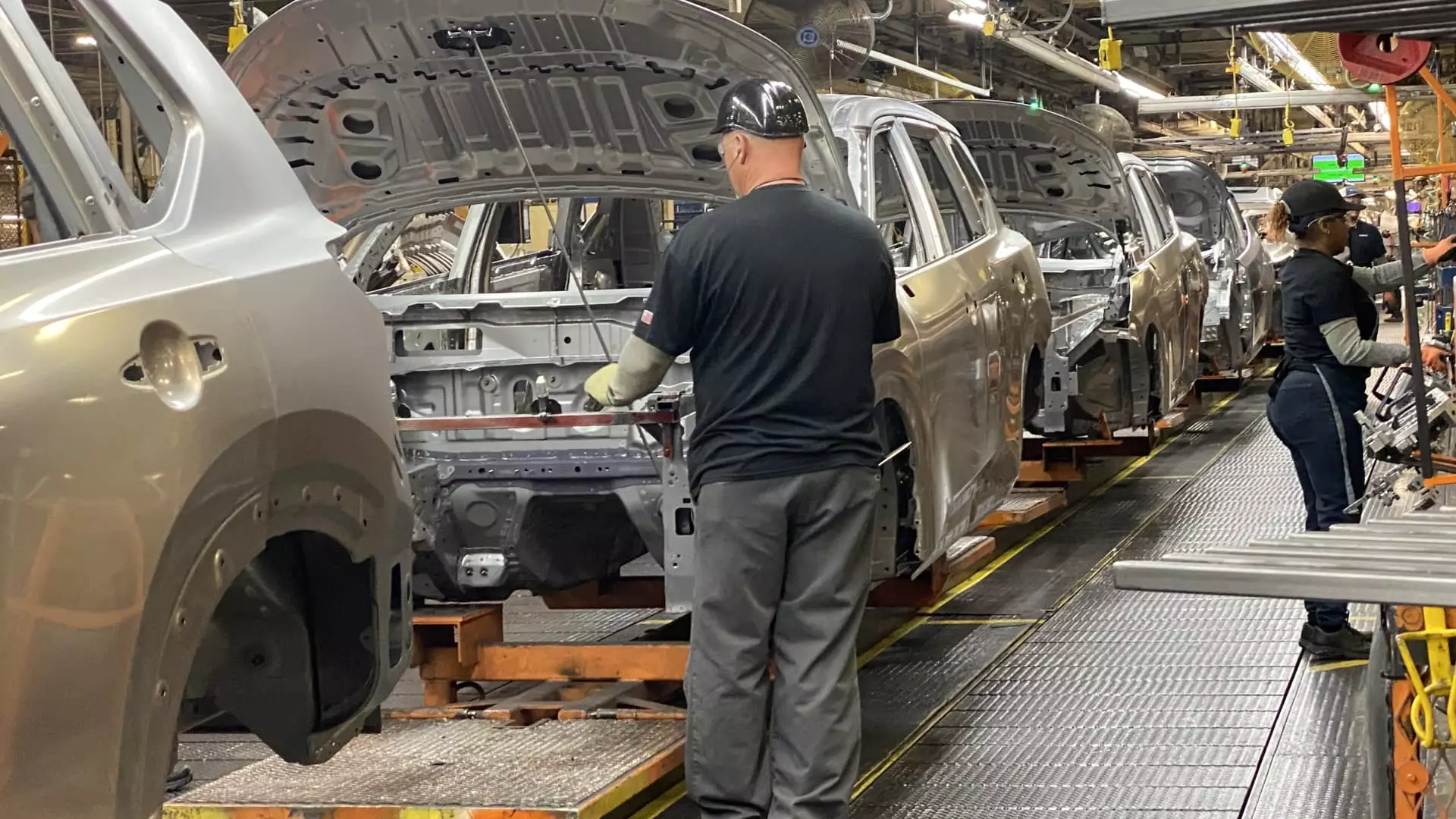At the intersection of policy and economics, the automotive industry is navigating treacherous waters due to President Trump’s 25% tariffs imposed on imported vehicles. The ripple effects of these tariffs are expected to reshape the industry drastically, with projections estimating costs that could soar between $110 billion and $160 billion annually. These figures reveal a significant burden that impacts not only manufacturers but also consumers, raising alarms about the future affordability of vehicles in a market already under pressure. The revelations from prominent analysts suggest the reality is more alarming than initially believed, with millions of vehicles expected to vanish from sales charts as prices become untenable for the average consumer.
The Impending Demand Shock
The implications of these tariffs extend beyond mere price increases; they hint at a looming demand shock that analysts predict may ultimately slashing sales by as much as 2 million units annually across North America. This staggering decrease stems from the direct increase in vehicle prices—estimates suggest new vehicle prices could escalate by an average of $2,000 to $4,000 within the next year. Such price adjustments threaten to alienate consumers already grappling with surging inflation, leaving many questioning their ability to afford a new car.
As the costs rise, purchasing a vehicle could transform from an achievable goal to a distant dream. Research indicates that the average cost of a new vehicle has already exceeded $50,000—a staggering statistic that underscores the tension between necessity and economic reality. For many consumers, the purchasing power will evaporate, leading to decreased demand that the automotive industry may struggle to absorb.
Manufacturers’ Resilience and Strategic Responses
While analysts acknowledge that automakers may absorb some initial costs associated with these tariffs, the implications are clear: manufacturers will eventually pass many of these costs onto consumers. Companies oscillate between different strategies to mitigate impending losses. For instance, some U.S. firms, notably Ford and Stellantis, have sought to soften the impact via promotional pricing strategies. However, this approach is likely only a temporary solution that cannot withstand sustained economic pressure.
Meanwhile, foreign manufacturers find themselves cornered by these tariffs. Companies like Jaguar Land Rover have halted shipments to the U.S., while Hyundai has announced a brief pause on price hikes—attempting to balance consumer goodwill with impending cost realities. This unequal playing field raises questions about the long-term viability of various manufacturers in a disrupted market landscape. The competition is shifting; willingness to adapt does not negate the profound cost implications these tariffs herald.
Impacts Beyond the Automotive Sector
Industry wide, the repercussions are seismic. A decline in vehicle sales will extend beyond auto manufacturers to affect the broader economy. Car dealerships, repair shops, and parts suppliers will feel the strain, with job losses likely cascading through the industry. Furthermore, as inflation levels hit their highest peaks in decades, consumer sentiment suffers, creating a feedback loop that chokes off discretionary spending and economic vitality.
Consider the automotive finance sector—auto loan interest rates hover at alarming heights, with averages surpassing 9.64% for new vehicles, exacerbating challenges for consumers seeking affordable options. As prices rise, financing becomes more prohibitive, pushing potential buyers further into a corner. A cycle of affordability issues could spiral the economy further into recessionary pressures.
An Overpriced Future: A Dangerous Precedent
The looming specter of escalating prices lies ahead. Analysts forecast that tariffs on automotive parts will precipitate further cost increases, with significant hikes expected for non-U.S. assembled vehicles—estimates climb as high as $6,000. The prospect of such price surges presents a dangerous precedent in economic policy that prioritizes short-term nationalist objectives over the long-term health of the industry.
For consumers, this signifies not just higher sticker prices but a potential limitation on vehicle options as certain models may be removed from the market altogether due to untenable production costs. The automotive industry, once synonymous with innovation and accessibility, faces the risk of becoming a luxury sphere reserved for the affluent.
The fallout from these tariffs is shifting; the dynamic of the automotive market is unraveling into a complex web of cost increases, diminished affordability, and dwindling consumer demand. As the industry grapples with policy-driven restructuring, it becomes evident that prudent re-evaluation is necessary to avert a full-blown crisis. The challenge remains for those in power to recognize that in seeking to protect domestic industries, they shouldn’t inadvertently place them under a stranglehold of their own making. The future of the American automotive industry hinges on carefully balanced policies that prioritize consumer access alongside economic sustainability.

